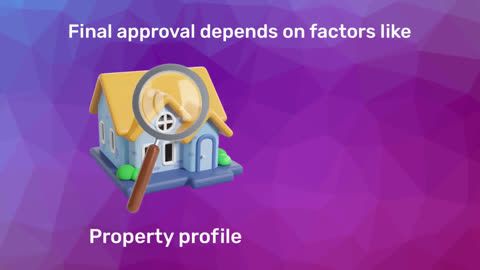The property guideline value is the government's estimated market value of a property based on official records. Ideally, this value should align with the property's actual market value. However, in most cases, the guideline value is lower than the market value, though there are rare instances where it may exceed the market value.
State governments are responsible for determining the property guideline value across all areas within their jurisdiction. Established neighbourhoods often have street-specific guideline values. For residential areas without clearly defined streets, the value is determined based on the property's survey number.
Key points of guidelines value on properties
Set by state authorities: Each state government determines the guideline value based on the area, type of property, and facilities nearby.
Represents legal minimum: This is the lowest value at which a property can be officially registered. You cannot register it for less than this value.
Used for tax calculation: The value is used to determine stamp duty and registration charges, making it a key element during property registration.
Avoids underpricing: By using this value as a baseline, the government helps avoid underreporting of property sale values, which could lead to loss in public revenue.
Differs from market price: In most cases, the market value is higher than the guideline value. However, in rapidly growing areas, the reverse may occur.
Promotes transparent deals: Buyers and sellers should be aware of the guideline value to avoid future disputes and to maintain fair transactions.
Influencing factors: Important factors include the property's location, access to roads or public services, nearby developments, and the type of structure.
When planning your property purchase, understanding guideline values helps you budget accurately for your dream home. Bajaj Finserv offers competitive rates starting from 7.45%* p.a to make homeownership more affordable. Check your home loan eligibility and discover loan amounts up to Rs. 15 Crore* with flexible tenure options. You may already be eligible, find out by entering your mobile number and OTP.
What is guideline value and why does it matter?
The property guideline value is an essential factor in property purchases and registration processes. It helps the registration officer identify cases of property undervaluation. If the guideline value of a property is significantly higher than its market value, such discrepancies can be reported to the concerned Deputy Inspector General of Registration, Inspector General of Registrations, or District Registrar for necessary adjustments.
Stamp duty and registration charges for a property are generally calculated based on its guideline value. To ensure alignment with current market trends, these guideline values are periodically reviewed and updated.
How is guideline value determined?
The guideline value of a property is determinedby government bodies through surveys and evaluations.The guideline value is based on the current market conditions and potential of the property's location.The state government fixes the guideline value for each area in the state.
Here are some things to consider when determining a property's guideline value:
- Location:The property's location is important to consider.
- Type:The type of property, such as residential or commercial, is important to consider.
- Size:The size of the property is important to consider.
- Comparable sales:Looking at recently sold properties that are similar to the property in question can help determine the guideline value.
- Belt method:This method is often used to evaluate the market value of a large property in urban areas.The property is divided into three belts, with the belt closest to the main road receiving the highest value.
The guideline value is the minimum valuation set by the government for stamp duty and registration purposes.It is often lower than the market value of the property, which is the actual selling price.
Guideline value vs. market value
Many confuse guideline value with market value, but they are different:
- Guideline value: Fixed by the government and used for taxation.
- Market value: The actual price that a buyer is willing to pay, influenced by demand and supply.
In many cases, the market value exceeds the guideline value. If you are applying for a home loan, lenders might consider the guideline value as the base for funding.
Understanding property valuations is crucial when securing financing for your home purchase. With Bajaj Finserv home loan, you can get approval in just 48 hours and benefit from low EMIs starting at Rs. 684/lakh*. Check your loan offers today to see how much you qualify for based on current property values. You may already be eligible, find out by entering your mobile number and OTP.
What happens when there is a difference between the guideline value and the market value of properties?
When the market value of a property is significantly higher than the guideline value, two major outcomes are possible:
Risk of unaccounted cash deals: A lower guideline value can encourage buyers and sellers to report only the official value while paying or receiving the remaining amount in cash. This unreported amount is often used to transfer black money in property transactions.
Reduced government revenue: Stamp duty and registration charges are collected based on the guideline value. If this value is much lower than the actual market price, the government earns less from the transaction, resulting in revenue loss for the state.
Both these scenarios highlight why it’s essential to ensure guideline values are regularly updated to match market trends.
Impact of guideline value on home loans
The guideline value of a property can impact a home loan in several ways, including:
- Loan amount:The bank will only lend a percentage of the property's value, so a lower valuation will result in a lower loan amount.
- Registration fees and stamp duty:The guideline value is used to calculate these fees.
- Taxation:The guideline value helps ensure fair taxation.Buying a property below the guideline value can lead to extra taxes.
- Financing problems:Buying a property below the guideline value can lead to potential financing problems.
The guideline value, also known as the circle rate or ready reckoner rate, is the government's estimated value of a property.It is used for tax and registration purposes, and is usually lower than the actual market value.The guideline value varies based on:Location, type of property, and neighbourhood.
The guideline value is periodically revised to keep it in sync with the market value.
How to navigate guideline value in property deals
Here are a few tips to handle guideline values effectively:
- Research thoroughly: Check the guideline value of your preferred area before making an offer.
- Negotiate wisely: Use guideline values to gauge whether the seller’s price is reasonable.
- Plan for taxes: Budget for stamp duty and registration charges based on the guideline value.
- Consult experts: Seek advice from real estate agents or financial advisers to ensure compliance.
Guideline value and real estate investment
If you are an investor, guideline values help evaluate potential gains. Properties in areas with rising guideline values often promise higher returns.
For instance, if a locality’s guideline value increases steadily, it indicates growing demand and infrastructure development. Such areas are likely to see a boost in market value over time.
Consequences under income tax of buying property below the stamp duty value
If you buy a property for less than its stamp duty value, there could be tax consequences under Section 56(2)(vii)(b) of the Income Tax Act. This law applies when the difference between the actual purchase price and the stamp duty value exceeds Rs. 50,000.
In such a case, the gap between the two amounts is treated as "income from other sources" and is taxable in the hands of the buyer. For example, if the stamp duty value of a house is Rs. 60 lakh, but you buy it for Rs. 50 lakh, then Rs. 10 lakh will be treated as your additional taxable income.
This rule is applicable only if the buyer is acquiring the property as a capital asset (for personal use or investment), not as stock-in-trade (e.g., for real estate businesses). Both buyers and sellers should keep this provision in mind to avoid unexpected tax bills and ensure that transactions are priced correctly and transparently.
Whether you're buying your first home or investing in property, having the right financing partner makes all the difference. Bajaj Finserv offers comprehensive home loan solutions with competitive interest rates and flexible repayment terms up to 32 years. Check your home loan eligibility today and take the first step towards securing your dream property with confidence. You may already be eligible, find out by entering your mobile number and OTP.






